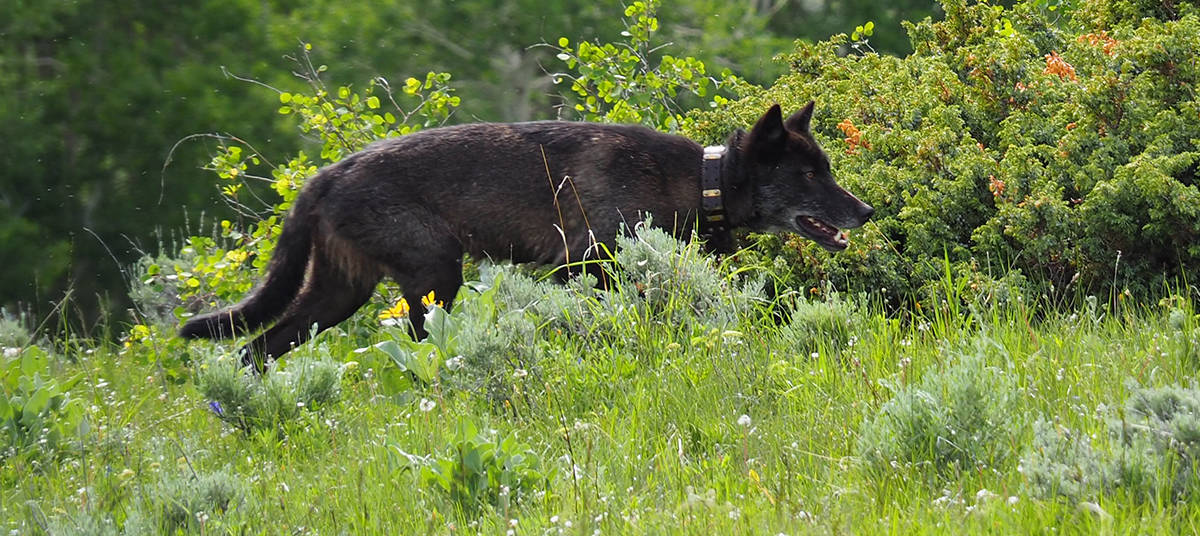Share this article
Can public engagement ease wolf reintroduction?
As Colorado Parks and Wildlife prepares to reintroduce wolves to the state, the agency has engaged in a lengthy outreach process with stakeholders and the public. Officials hope the effort, facilitated by the Keystone Policy Center, can reduce conflict and improve public trust.
Never before have U.S. voters called for restoring gray wolves (Canis lupus)—an issue that can be extremely controversial. Will public outreach help? To find out, Colorado Parks and Wildlife and Colorado State University are partnering to study the engagement efforts.
We reached out to Mike Quartuch, CPW’s human dimensions specialist and researcher, to discuss the research. A co-principal investigator for the project, he’s teaming with Rebecca Niemiec, co-director of CSU’s Center for Human-Carnivore Coexistence and an associate professor at the university’s Department of Human Dimensions and Natural Resources. His responses have been edited for brevity.
What prompted you to study the social outcomes of wolf management for stakeholders and the public?
Stakeholder engagement (SE) is critical to informing natural resource decision-making. Previous research and our own experiences suggest that conducting robust, inclusive and transparent SE processes can result in more equitable outcomes that can help generate higher levels of public support.
When ballot measure 114 passed, requiring the Colorado Parks and Wildlife Commission to reintroduce wolves into the state, Niemiec and I began thinking about how we might collaborate on a longitudinal study to examine important social outcomes associated with this effort. We were interested in learning how things like trust, social conflict, social learning and acceptability of management alternatives change over time and the extent to which they influence stakeholders’ support for the wolf management planning process and the management plan itself.
What is unique about this reintroduction effort as opposed to other reintroduction efforts?
The first thing that makes this reintroduction effort unique is that it was the result of a ballot initiative. The citizens of Colorado put forward and ultimately voted in favor of reintroducing wolves into the state. It is also unique because it is the first time (to my knowledge) that a state conservation agency will reintroduce wolves.
Will your research shape this process or inform future public engagement?
One goal of this study is to inform future public engagement processes, both within and outside of Colorado, by learning what these processes achieve and how we can continue to improve upon them. Throughout the wolf reintroduction planning process, we will also be sharing high-level results from interviews and surveys with Keystone Policy Center and CPW leadership.
Ultimately, the purpose is two-fold. First, we hope to facilitate an adaptive social science approach for wildlife planning efforts by learning how those directly involved with and outside of the wolf reintroduction process perceive social learning, social conflict, trust and management approaches. Second, we intend to gather input from stakeholders with different levels of involvement and interest in the process, which can be used to inform planning of SE and public outreach and improve the agency’s SE efforts over time.
Why is it important to study stakeholder engagement?
As a conservation agency, Colorado Parks and Wildlife takes its public trust responsibilities seriously. The agency stewards wildlife and natural resources—including state parks—to sustain natural resources over time and allow people and future generations to enjoy them. This means that it is important to hear from stakeholders—or beneficiaries of public trust resources—and provide them with opportunities for meaningful involvement throughout decision-making processes.
While stakeholder engagement processes are increasingly used to inform decision-making about natural resource management issues, few studies have examined the social outcomes of these processes over time. Our study is meant to address this gap and inform researchers and practitioners throughout the world.
Is engaging stakeholders growing in importance as the public looks for less consumptive-use priorities from wildlife agencies?
I’m not sure I would say that stakeholder engagement processes are growing in importance, but many wildlife agencies want to ensure that they are being responsive to public interests and needs. Recent research has illustrated that wildlife values among the public are changing, albeit in different magnitudes across the U.S. As a result, it is important that state conservation agencies understand these values and how they influence wildlife management.
Stakeholder engagement efforts are one way in which agencies can learn about and meaningfully include different perspectives into management decisions, and there are a suite of best practices one can follow when implementing them. Doing so not only helps agencies be responsive. They also help agencies remain relevant among the various publics they represent.
Header Image: As Colorado Parks and Wildlife prepares to reintroduce wolves to the state, some wolves, like the one pictured here, have already arrived on their own. Credit: Colorado Parks and Wildlife








